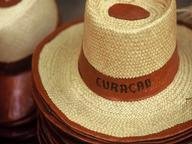Quiz Answer Key and Fun Facts
1. Called after one of the products from which it is made, what is the name of this headwear often seen worn in hotter climates?
2. These familiar looking hats, oddly enough, are not named after the country of their origin, but from another land close by. Can you name one of these hats?
3. What is the general term for any of these pictured old-fashioned hats?
4. Worn by women everywhere in the 1920s, what was this hat called?
5. What is this hunter's hat called? The hat and the fictional character Sherlock Holmes have become closely associated over time.
6. Women wore these hats for several centuries in one style or another. What is a general term used for this head covering?
7. Worn by many upper class ladies in the Middle Ages, what was this headwear called?
8. Associated with Spanish history, what is the name for this hat?
9. Pieces of fluff and feathers for women, such as the one depicted, go by which intriguing name?
10. This hat is related to the top hat, only with slightly straighter sides. With a name related to the culinary arts, what is its name?
Source: Author
Creedy
This quiz was reviewed by FunTrivia editor
kyleisalive before going online.
Any errors found in FunTrivia content are routinely corrected through our feedback system.


